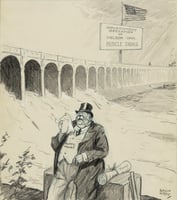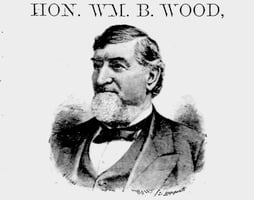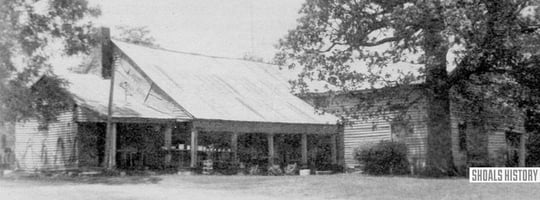This editorial cartoon was featured in the April 13, 1933 issue of the New York World-Telegram...
Havannah: A Lauderdale County "Paper Town"
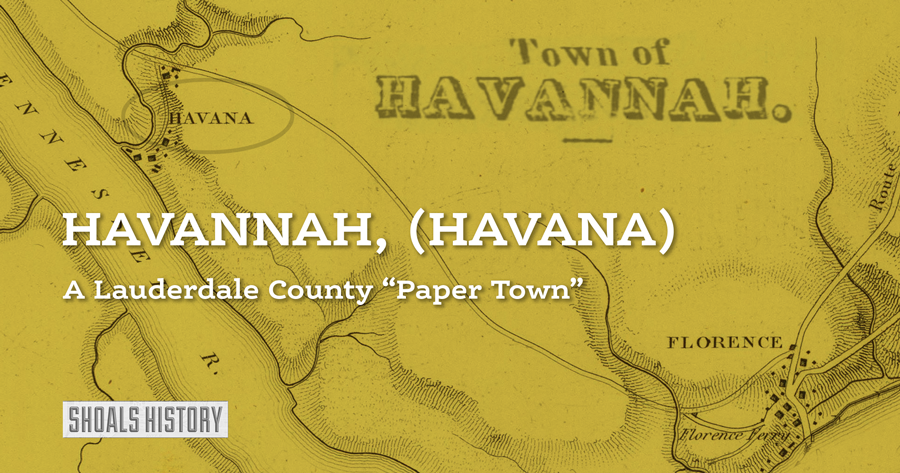
In the pages of an old newspaper, a vision was cast upon the fertile lands of Lauderdale County, Alabama – the birth of a town named Havannah. Fast forward to the present day, and we find ourselves reflecting on the past, rediscovering the essence of this historical announcement, and learning more about this "Paper Town" (Paper towns are settlements that appear on maps but do not actually exist). Let's delve into the charm and promise that once surrounded Havannah.
Havannah: A Vision Unveiled
More than two centuries ago, in 1818, the trustees of a newly planned town named Havannah took to the pages of the countries newspapers, announcing the availability of lots for sale. What was the allure of this undeveloped plot in Lauderdale County, Alabama?
The land was situated in Lauderdale county, Alabama Territory, on the north side of the Tennessee river, immediately above Colbert’s Reserve, within nine miles from Florence, Alabama. That section of country had been recently sold at Huntsville when forty-two new townships brought the Government the unprecedented sum of $5,000,000.
Lush Land and Favorable Climate
Havannah's marketing pitch began with its enticing natural assets. The land was portrayed as exceptionally fertile and extremely affordable, with prices ranging from $30 to $78 per acre. The promise of abundant agricultural productions echoed through the narrative, painting a picture of a thriving town surrounded by lush landscapes. Havana was envisioned as a haven for successful agriculture and a comfortable living experience.
Commercial Aspirations on the Tennessee River
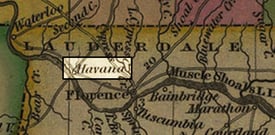 The strategic location of Havannah on the north side of the Tennessee River was another key selling point. Trustees foresaw it as a future commercial hub, especially considering the rising importance of the northern riverbank. The town, if realized, would become a vital point for steamboats, barges, and keel-boats, facilitating trade between settlements and ensuring a steady supply of foreign goods.
The strategic location of Havannah on the north side of the Tennessee River was another key selling point. Trustees foresaw it as a future commercial hub, especially considering the rising importance of the northern riverbank. The town, if realized, would become a vital point for steamboats, barges, and keel-boats, facilitating trade between settlements and ensuring a steady supply of foreign goods.
Cotton Commerce and Connectivity
The sales pitch leaned heavily on the potential for cotton commerce. Havannah was presented as an ideal destination for cotton merchants due to its strategic position that would provide early access to markets. The proximity to the Mississippi, southern parts of Alabama Territory, and West Florida added weight to the town's significance in both export and import trades.
Connectivity was also highlighted, emphasizing a planned establishment of a ferry for easy access from populous settlements in Kentucky and Tennessee. The town's location was portrayed as the most convenient crossing point, reinforcing its potential importance in the transportation network.
The Vision's Unfulfilled Legacy
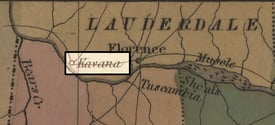 Intriguingly, despite the carefully crafted marketing campaign and the attractive vision presented to potential investors, Havannah never materialized as a thriving town in 1818. It remained a town only on paper, popping up on local area maps again in 1834. More research is being done on exactly why Havannah was never developed and why it was forgotten. The paper town may never have flourished into a bustling community, but its story now lives on, thanks to this lesson in Shoals History.
Intriguingly, despite the carefully crafted marketing campaign and the attractive vision presented to potential investors, Havannah never materialized as a thriving town in 1818. It remained a town only on paper, popping up on local area maps again in 1834. More research is being done on exactly why Havannah was never developed and why it was forgotten. The paper town may never have flourished into a bustling community, but its story now lives on, thanks to this lesson in Shoals History.
